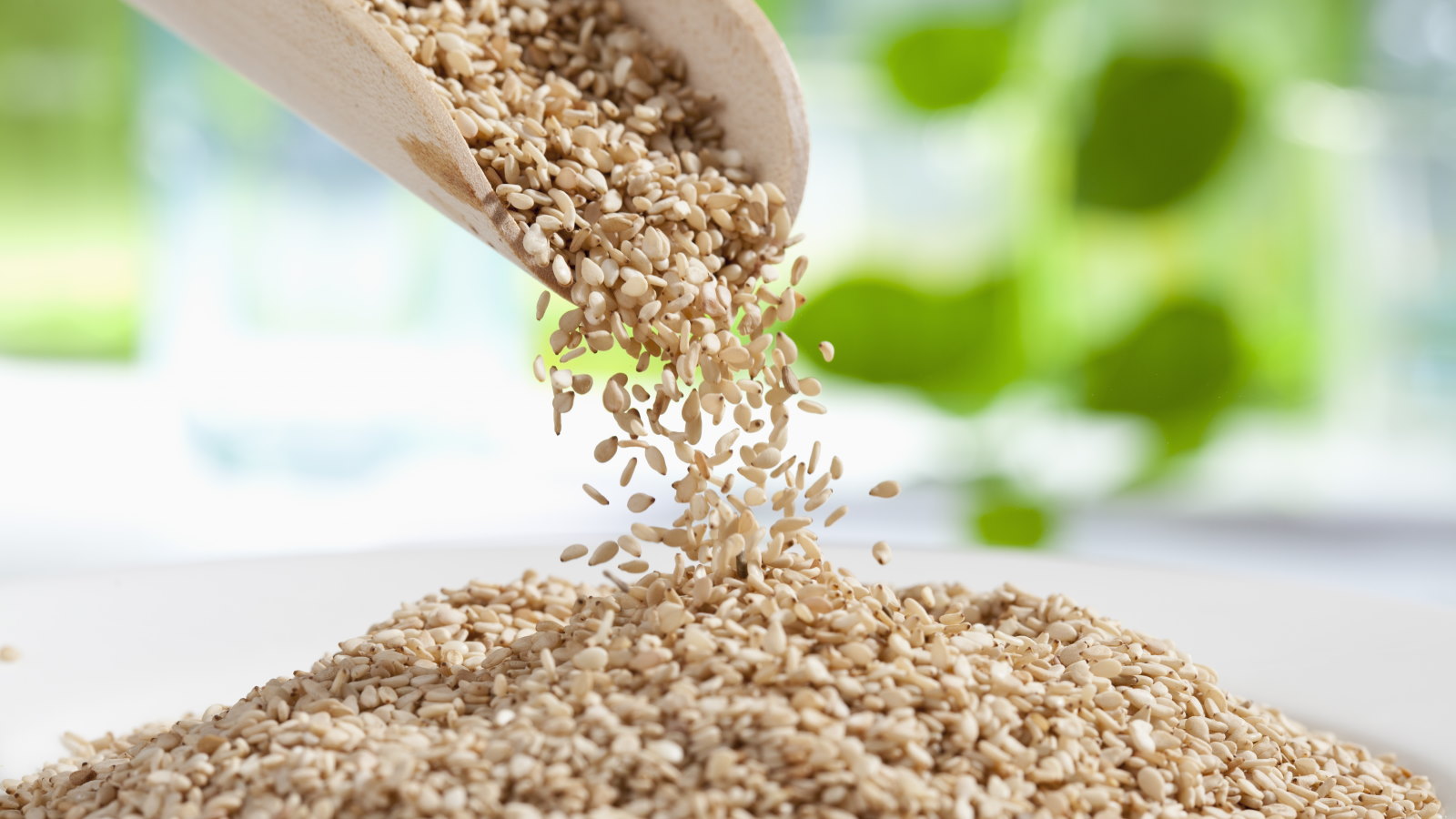
Sesame seeds are a regular sight - often sold in health stores, seen on buns or bagels, toasted on sushi or salads, or ground into tahini paste. While the ingredient may be commonplace, it may be a surprise that you can grow sesame plants at home.
You must live in a warm climate, have well-draining soil, and give the plants a long growing season to succeed with growing sesame. If you are fortunate enough to have the right climate, the drought-tolerant plants are low-maintenance and you can get a large harvest of sesame seeds at the end of the season.
This guide takes a deep dive into how to grow sesame, including tips from two plant experts for where and how to cultivate healthy plants. From sowing to harvesting seeds, this is all you need to know about how to grow sesame at home. If you seek new vegetable garden ideas and live in a warm location, why not consider cultivating sesame plants to get your own seeds?
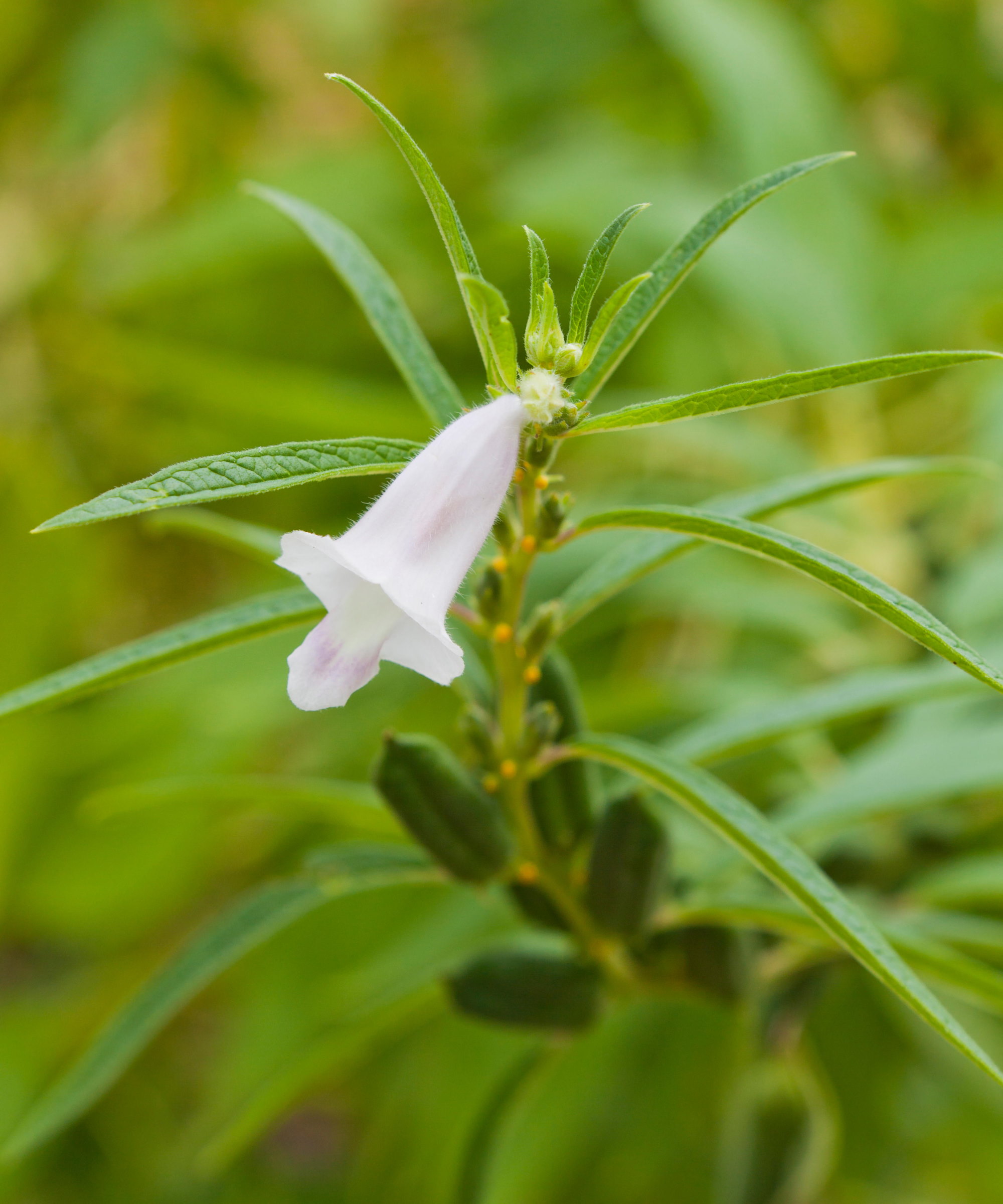
Why grow sesame plants?
Sesame (Sesamum indicum) is a perennial crop grown worldwide in tropical climates. Sesame plants are native to sub-Saharan Africa and India and have been cultivated for thousands of years.
Sesame is grown primarily for its edible seed pods, while sesame can also be used for medicinal purposes. Nowadays, the seeds are turned into oil or can be eaten raw, toasted, ground into paste, or added to dishes to take advantage of their many health benefits.
Sesame plants are perennial in tropical climates, but are often grown as annual plants in US hardiness zones 7-10. Plants grow to around 24 inches tall and have opposite, smooth, green leaves that grow out of a square central stem.
The plants also have tubular white, pink, or purple flowers. Carissa Kasper, a garden expert for West Coast Seeds, claims the flowers are ‘highly attractive to honeybees’ and other pollinators, but they do have a little trick to help with pollination.
‘The plants are relatively self-fruitful, so when the flowers open, the seeds are already fertilized,’ she reveals. The flowers are followed by distinctive grooved seedpods that contain up to 100 seeds. The seeds are small and have a nutty flavor.
How to grow sesame from seed
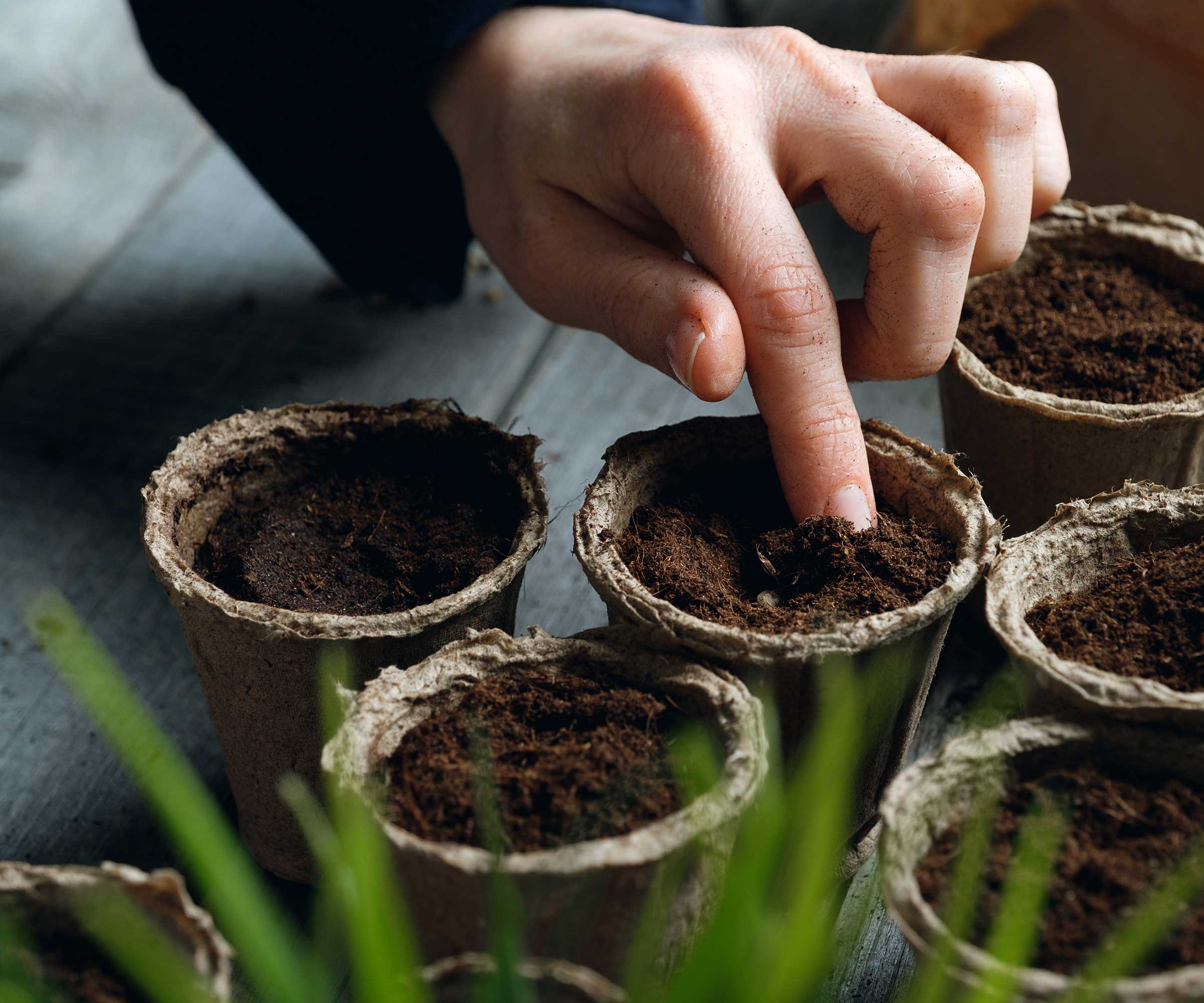
Sesame seeds have a long growing season, so Carissa Kasper recommends sowing seeds indoors in late winter or early spring, around 4-6 weeks before your last frost date.
She adds: ‘For best success, you will want to just lightly cover the seeds with sterilized starter mix and keep just moist at around 70°F (21°C) until germination.’
After germination, keep seedlings warm and moist, but they are sensitive to overwatering, so avoid waterlogging the soil and having plants in a highly damp environment.
Transplant seedlings 2-3 weeks after your last frost, after a period of hardening off plants, when the nighttime temperatures are above 50°F (10°C). Grow sesame plants six inches apart in rows that are 24-36 inches apart.
You can get black, white, or tan sesame seeds at True Leaf Market to plant.
Where to grow sesame plants
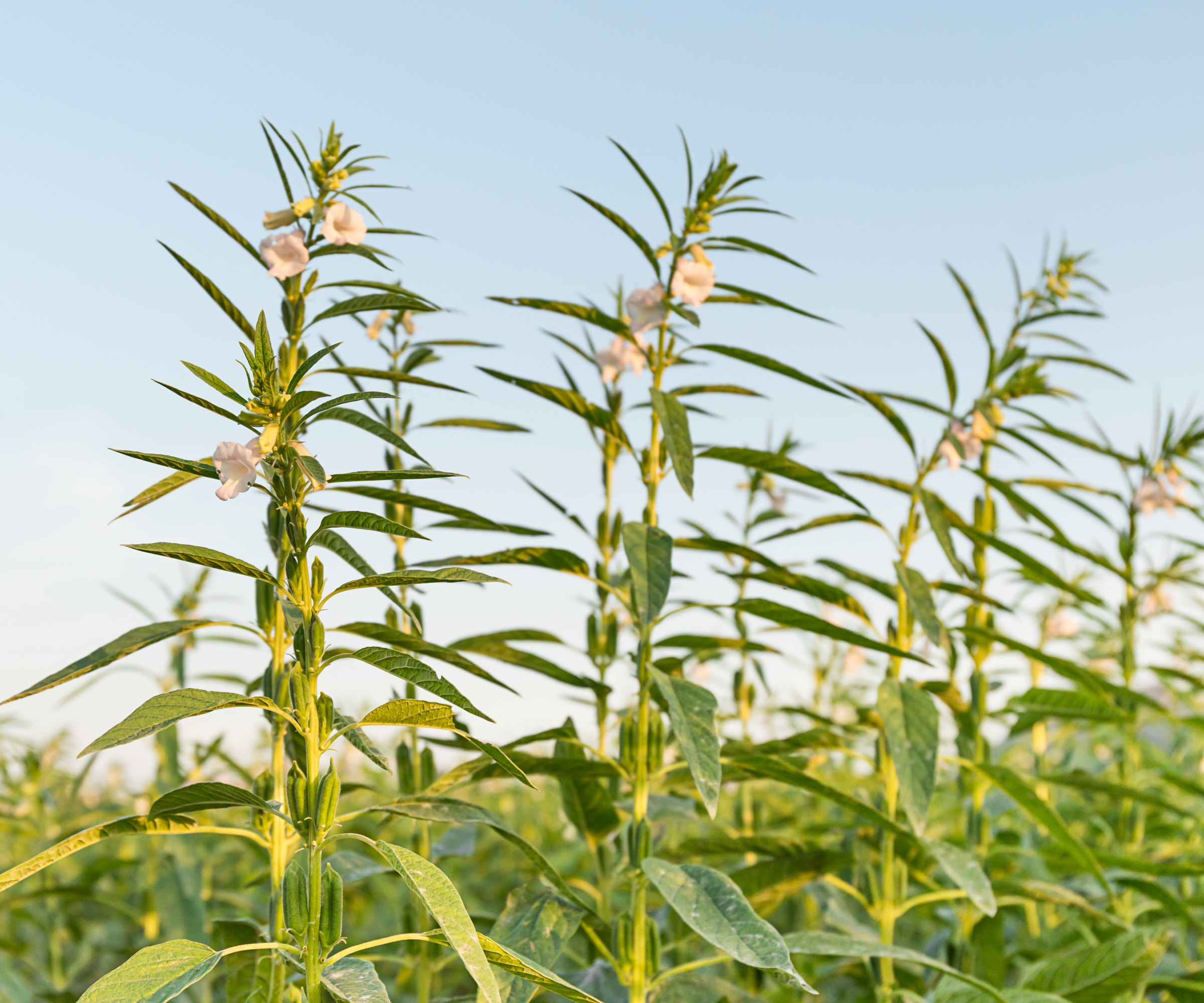
Sesame plants will thrive and give the best harvest of seeds when grown in the right levels of warmth. Plants need at least six hours of direct sunlight per day and can thrive in spots near brick or stone walls, as they can enjoy extra heat. Avoid growing sesame in shaded areas, the plants will have stunted growth and produce fewer seeds.
Plant sesame in fertile and well-draining soil. The crop does not like heavy or poorly draining soil types, such as clay. Adding compost or organic matter to such soil can improve the structure and fertility. Alternatively, sesame plants can be grown in large pots in container gardens if your ground is unsuitable.
Care tips for growing sesame plants
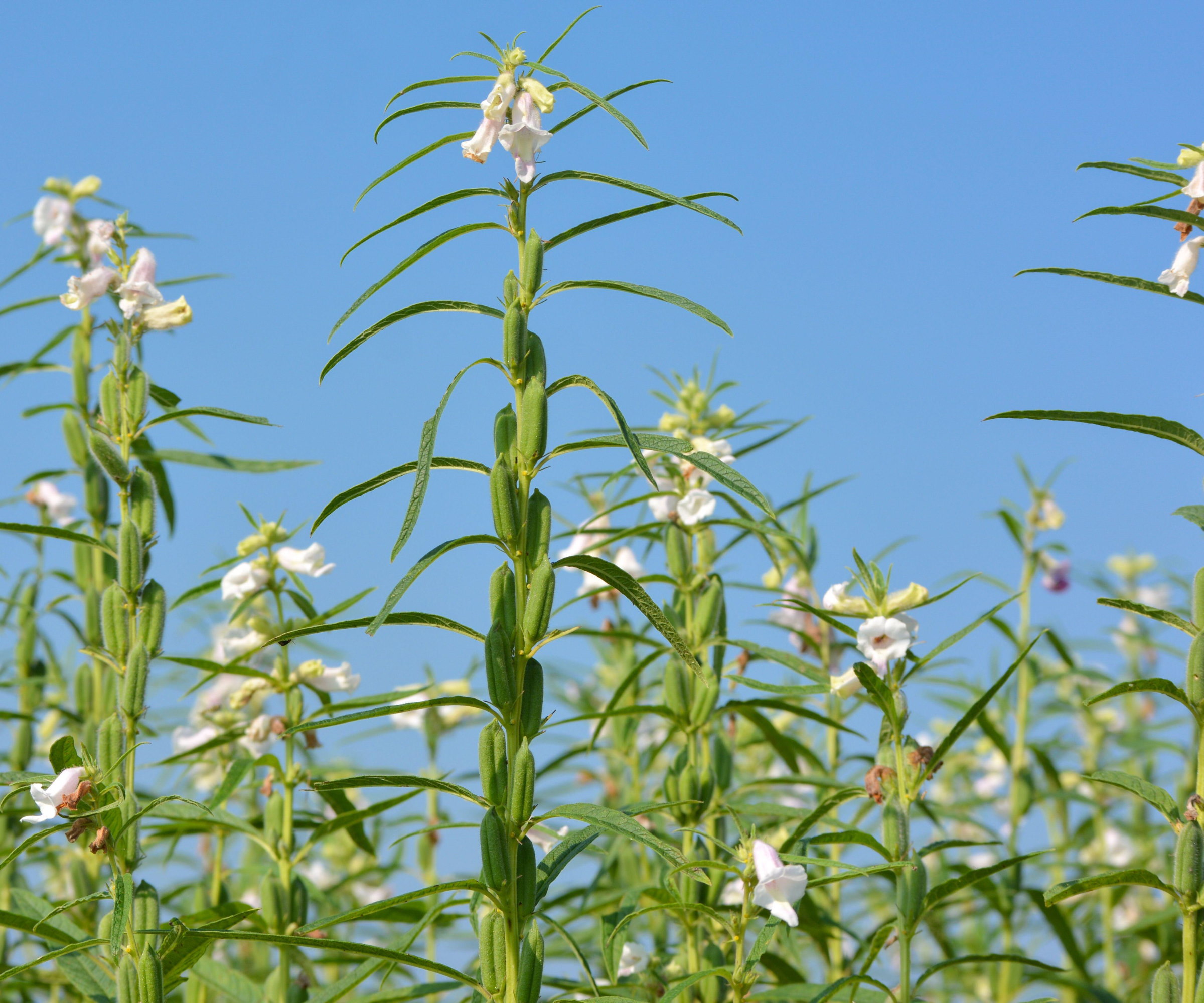
Sesame is a low-maintenance, drought-tolerant plant that grows well naturally in hot and dry locations with little summer rainfall. It is great for drought-tolerant planting ideas, but great care must be taken not to overwater outdoor plants.
Angela Judd, founder of Growing in the Garden, has grown sesame in her low desert Arizona garden, and she recommends to ‘water only when the top inch of soil is dry, but always avoid overwatering’.
Using a soil moisture meter, available at Amazon, as well as your finger, can help make decisions about when to water plants. However, automatic watering aids like drip irrigation or soaker hoses are best avoided as the plants won’t prosper when soils are too wet.
As for fertilizing sesame plants, Angela adds: ‘Sesame tolerates difficult soil and conditions, but the highest yields result from fertile, well-drained soil and adequate sunlight. If you begin with compost-enriched soil, sesame does not require additional feeding.’
Sesame plants do not need pruning during the growing season, bar removing any damaged or diseased leaves if spotted.
How to harvest sesame seeds
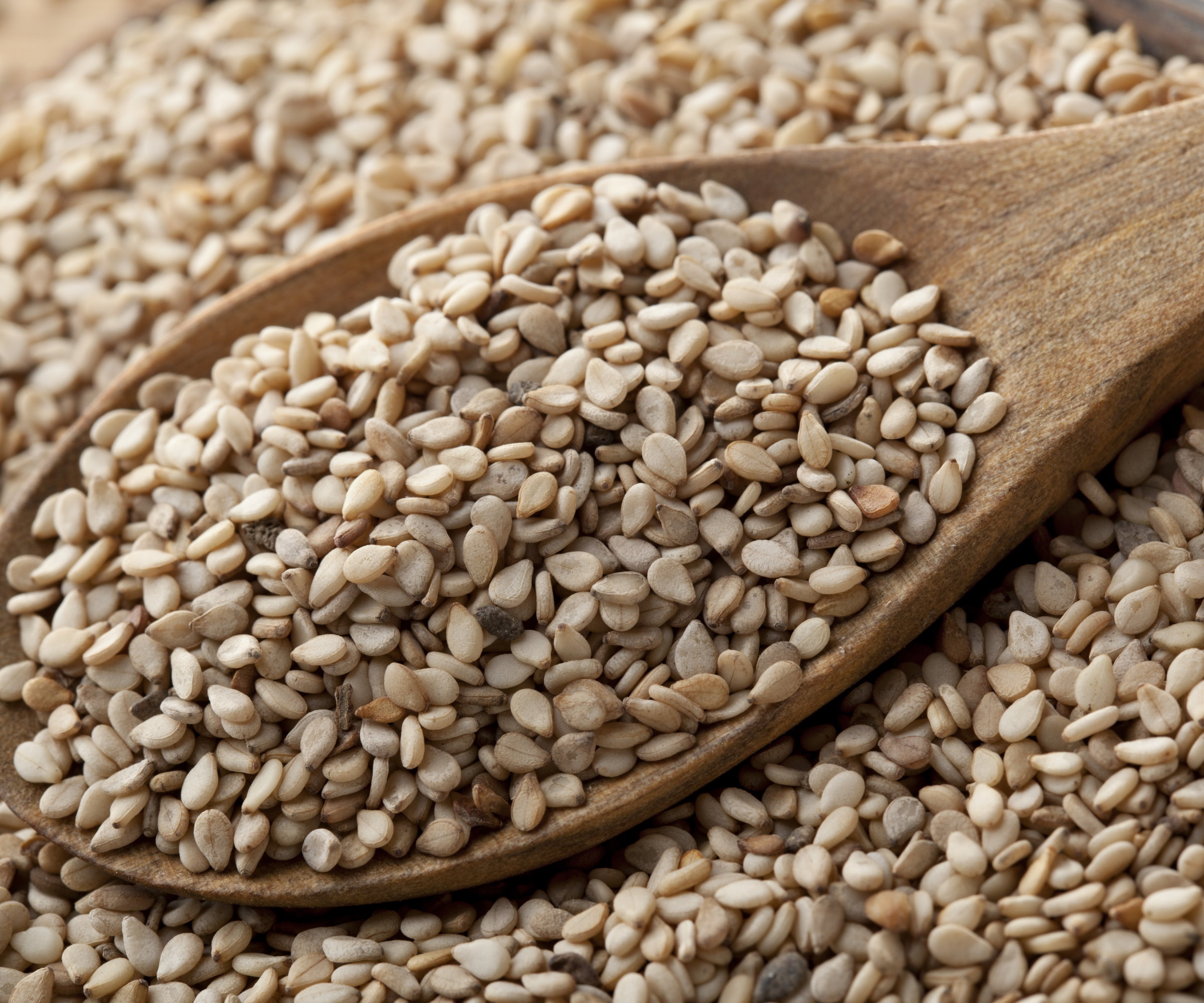
Sesame seed pods start ripening from the bottom of the stalk first, from late summer onwards, and need to be harvested once they are ripe.
‘Keep an eye on those pods; as they brown and begin to split, they will tell you when the rest are nearing harvest time,’ advises Angela Judd. ‘Harvest as the pods begin to dry out, but before they split and spill seeds. I cut off an entire stem once they begin to turn brown.’
The stems and seed pods can be separated by hand, or with a pair of pruning shears or gardening snips, such as these pruning snips at Amazon. But take care when harvesting not to rip or shatter the seed pods, which causes the seeds to spill out.
‘Put the stems or pods in a large paper sack to dry,’ says Angela. ‘Once the pods are completely dry, the seeds fall out easily. Gather the seeds from the bottom of the paper sack and shake out the pods to remove the remaining seeds. Use a colander or sieve to sift any plant material out of the harvested seeds.’
If wet weather is predicted before harvest time, Carissa Kasper recommends cutting the stems at the base and bringing them indoors to dry for harvesting.
‘Hanging the stems will cause the seeds to just fall out as the pods dry,’ she says. ‘As the plants dry, the foliage will darken, and more pods will open from the base of the stem upwards. Once most of the pods have opened, bash them against the sides of a bucket to collect the dry seeds.’
The sesame seeds can be eaten straight away after being separated from the chaff and plant material, plus you can store seeds to sow again next year.
FAQs
Can you grow sesame seeds from the store?
You can plant harvested seeds or ones from the grocery store to grow sesame plants. If you want to grow sesame seeds from store-bought ones, they need to be recently purchased raw and untoasted sesame seeds.
How long does it take to grow sesame seeds?
Carissa Kasper from West Coast Seeds claims that sesame plants need ‘75-100 days from transplant’ to reach maturity. As it can take several months to go from planting to harvest, it is best to sow seeds indoors to get a head start on the season. The soil temperature must be at least 70°F for good germination, so only those in the warmest US hardiness zones can sow seeds outdoors directly into the soil in late winter or early spring.
Another nutritious seed you can harvest from the garden is sunflower seeds. These seeds are a source of healthy fats, fiber, and antioxidants, and are simple to pick. Harvest sunflower seeds in early fall once the sunflower heads have faded and the backs have turned brown. As well as harvesting sunflower seeds to eat, they can also be used to feed birds in winter or saved to sow again next year.







